Helianthus niveus, Showy Sunflower
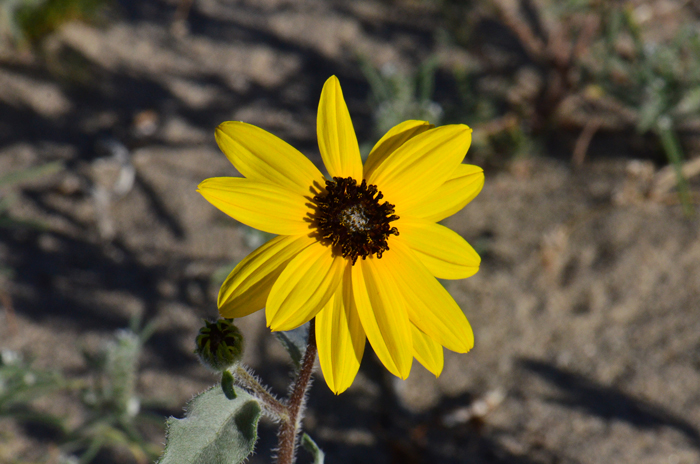

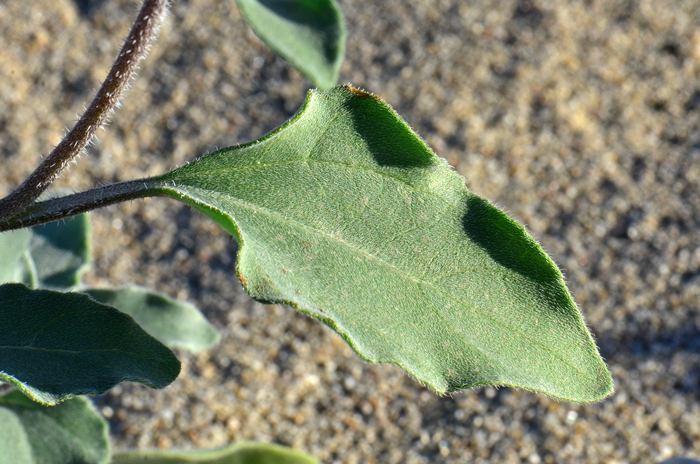
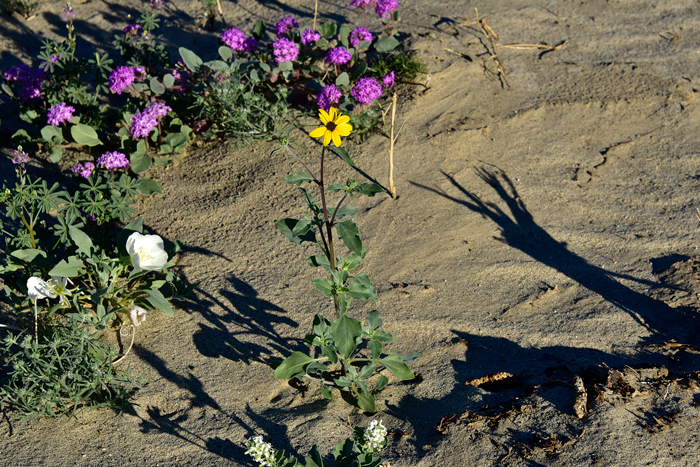
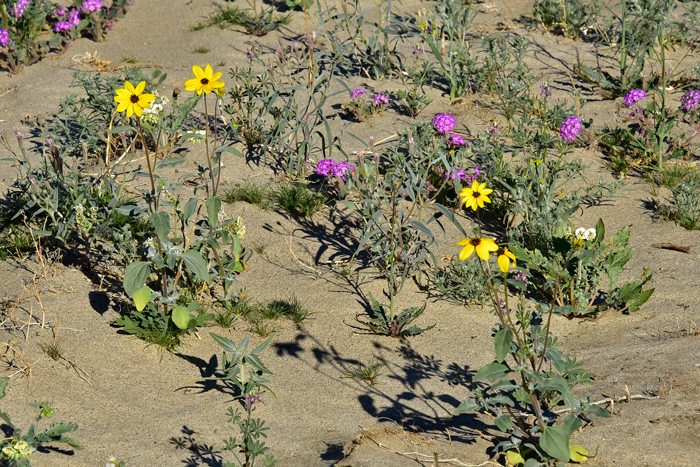
Scientific Name: Helianthus niveus
Common Name: Showy Sunflower
Also Called: Algodone Sunflower, Snowy Sunflower
Family: Asteraceae, Sunflower Family
Synonyms: ()
Status: Native
Duration: Annual, Perennial
Size: Up to 5 feet () tall, usually less
Growth Form: Forb/herb, subshrub; stems strigose and stiff-spreading-hairy or soft-white appressed-hairy.
Leaves: Green or gray-green; mostly alternate; long petioles; lanceolate to ovate; densely stiff- or soft-hairy.
Flower Color: Yellow with dark brown or red center; 1 to few flower heads; ray florets yellow, 13 to 21; lobes on disk florets red to dark purple in California; phyllaries 8-12mm more or less lanceolate, canescent to soft-hairy.
Flowering Season: March to June; flowers in photo taken March 09 near Anza-Borrego Springs, California.
Elevation: Below 1,000 feet ()
Habitat Preferences: Open sandy or gravelly areas, open sunny areas, roadsides and disturbed areas, dry or moist areas.
Recorded Range: Showy Sunflower is found in the southwestern United States in AZ, CA, NM, NV, TX. It is also native to Baja California and northwest Mexico.
North America & US County Distribution Map for Helianthus niveus.
North America species range map for Showy Sunflower, Helianthus niveus:
North American range map courtesy of Virginia Tech, Dept. of Forest Resources & Environmental Conservation
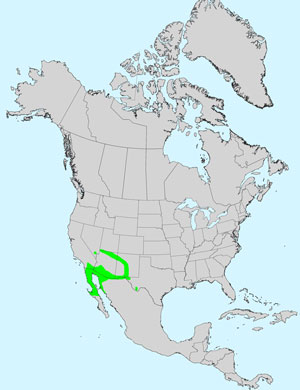
U.S. Weed Information: Unknown
Invasive/Noxious Weed Information: Unknown
Wetland Indicator: Unknown
Threatened/Endangered Information: Helianthus niveus ssp. tephrodes, the Algodone Dunes Sunflower is list as "Rare or Endangered" in California.
CNPS: California Rare Plant Rank: 1B.2; Rare or endangered in California and elsewhere; .2: Fairly endangered in California
Genus Information: In North America there are 62 species and 62 accepted taxa overall for genus. Worldwide, The Plant List includes 71 accepted species names and a further 128 scientific names of infraspecific rank for the genus.
The genus Helianthus was published by Carl Linnaeus, (1707-1778) in 1753.
In the Southwestern United States: Arizona has 8 species of Helianthus, California has 11 species, Nevada has 7 species, New Mexico has 14 species, Texas has 21 species, Utah has 6 species. Data approximate and subject to revision.
There are 3 sub-species in Helianthus niveus;
Helianthus niveus ssp. canescens, Showy Sunflower, (AZ, CA, NM, NV, TX).
Helianthus niveus ssp. tephrodes, Algodone Dunes Sunflower, (AZ, CA),
Helianthus niveus ssp. niveus, (western Baja California).
Comments: Showy Sunflower is a forb/herb or sub-shrub with either stiff or soft hairs. Plants in photos above were found at Anza-Borrego Springs, CA in preferred sandy soil habitat growing side by side with Dune Evening Primrose, Oenothera deltoides, and Desert Sand Verbena, Abronia villosa.
There are approximately 50 species in the "Sunflower" genus Helianthus in North America of which 15 species in Helianthus and the Algodone Dunes Sunflower is listed as Rare and Endangered in California.
In Southwestern Desert Flora also see Common Sunflower, Helianthus annuus and Prairie Sunflower, Helianthus petiolaris.
The genus Helianthus was published by Carl Linnaeus, (1707-1778) in 1753.
The species epithet “niveus”

